Christian monks may have buried this treasure to dupe the Vikings
One vessel in the hoard had Zoroastrian religious symbols.

More than 1,000 years ago, someone hid an opulent hoard containing more than 100 valuables underground in Scotland. When this buried treasure of silver brooches and bracelets, gold pins and rings, and an intricately decorated metal vessel was discovered in 2014, researchers initially thought that the Vikings had buried it.
They were wrong.
A new analysis of the hoard using X-rays, CT scans, microscopy and molecular analysis has revealed that although these valuables were buried during the Viking Age (A.D. 793-1066), it's likely that Christian monks or priests buried these riches, The Independent reported.
Related: Photos: Roman-era silver jewelry and coins discovered in Scotland
A metal detectorist discovered the trove — dubbed the Galloway Hoard — in the town of Balmaghie, which is in the Scottish council area of Dumfries and Galloway. In 2017, after a fundraising campaign, National Museums Scotland acquired the hoard, calling it "one of the most important U.K. archaeological finds of the century," in a news statement.
One of the hoard's standouts is a metal-lidded vessel wrapped in wool and other textiles — only the third silver-gilt decorated vessel known from a Viking Age hoard in the United Kingdom. Researchers couldn't unwrap the vessel without damaging the artifacts, so they used X-ray imagery instead, which allowed them to make virtual 3D models of the vessel and view its decorated surface.
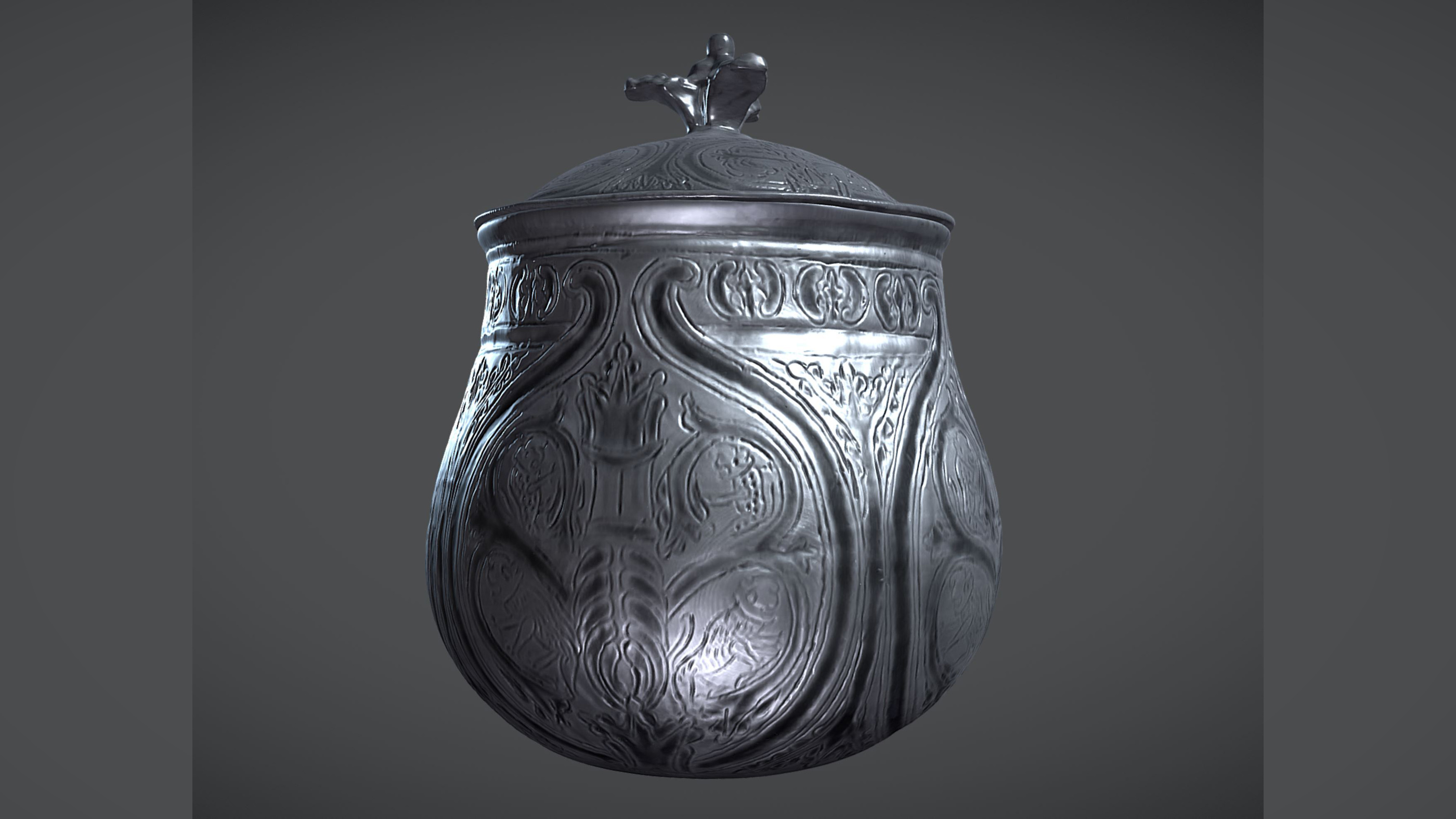
Unlike the other two silver-gilt decorated vessels, this one is not from the Carolingian, or Holy Roman Empire of continental Europe, "as we'd expected," Martin Goldberg, principal curator of medieval archaeology and history at National Museums Scotland, said in the statement. "Instead, the decoration and design show leopards, tigers and Zoroastrian religious symbols, all of which suggest that it is a piece of Central Asian metalwork from halfway round the known world."
Sign up for the Live Science daily newsletter now
Get the world’s most fascinating discoveries delivered straight to your inbox.
When the researchers radiocarbon-dated the wool, they were surprised to learn that it dated to A.D. 680 to 780. The hoard itself dates to A.D. 900, so the wool is much older, they found.
"The vessel is from beyond Europe, potentially thousands of miles away, and the wool wrapping, it predates the Viking Age, being more than 100, or maybe even 200, years old by the time it was buried," Goldberg said.
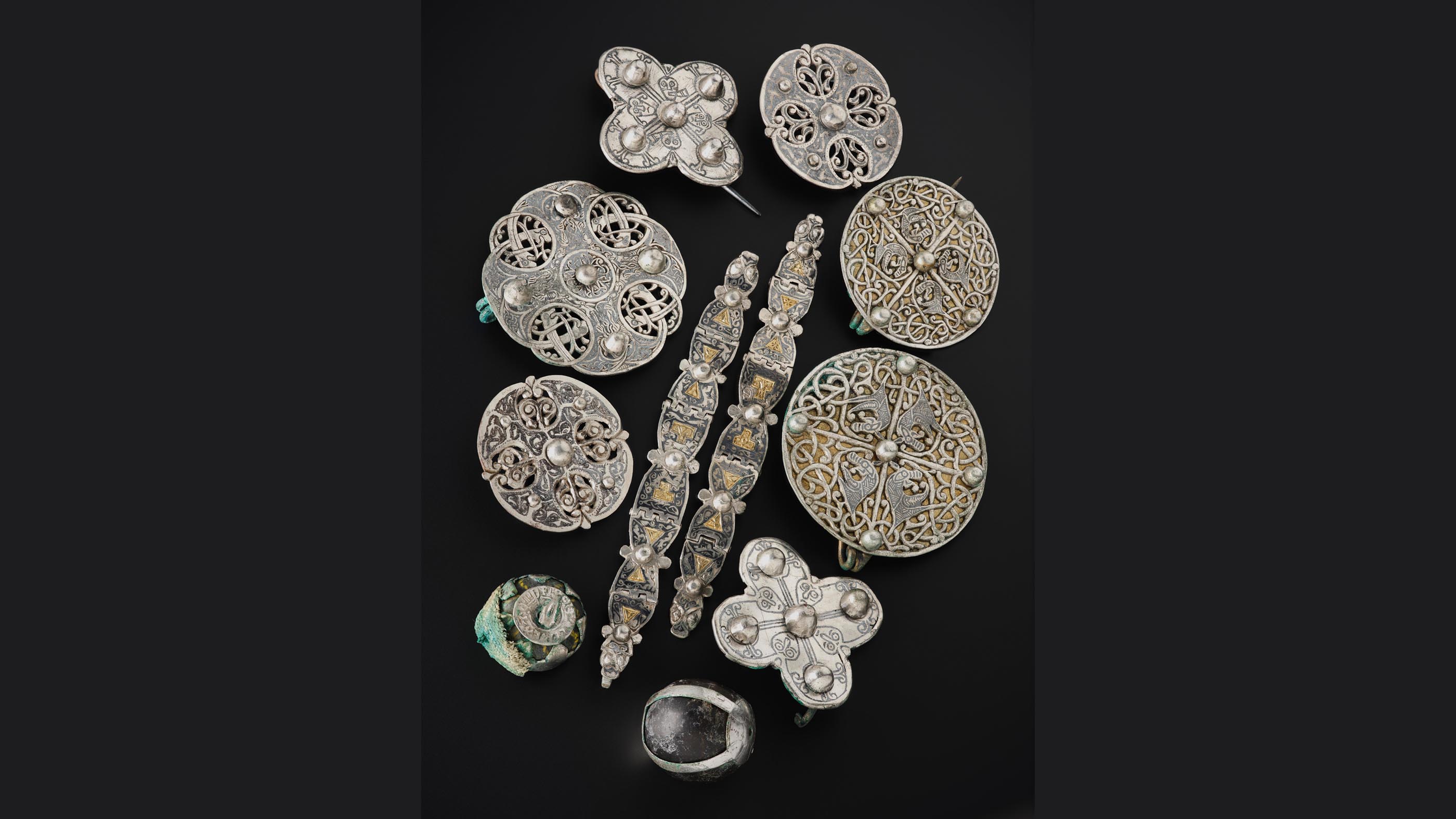
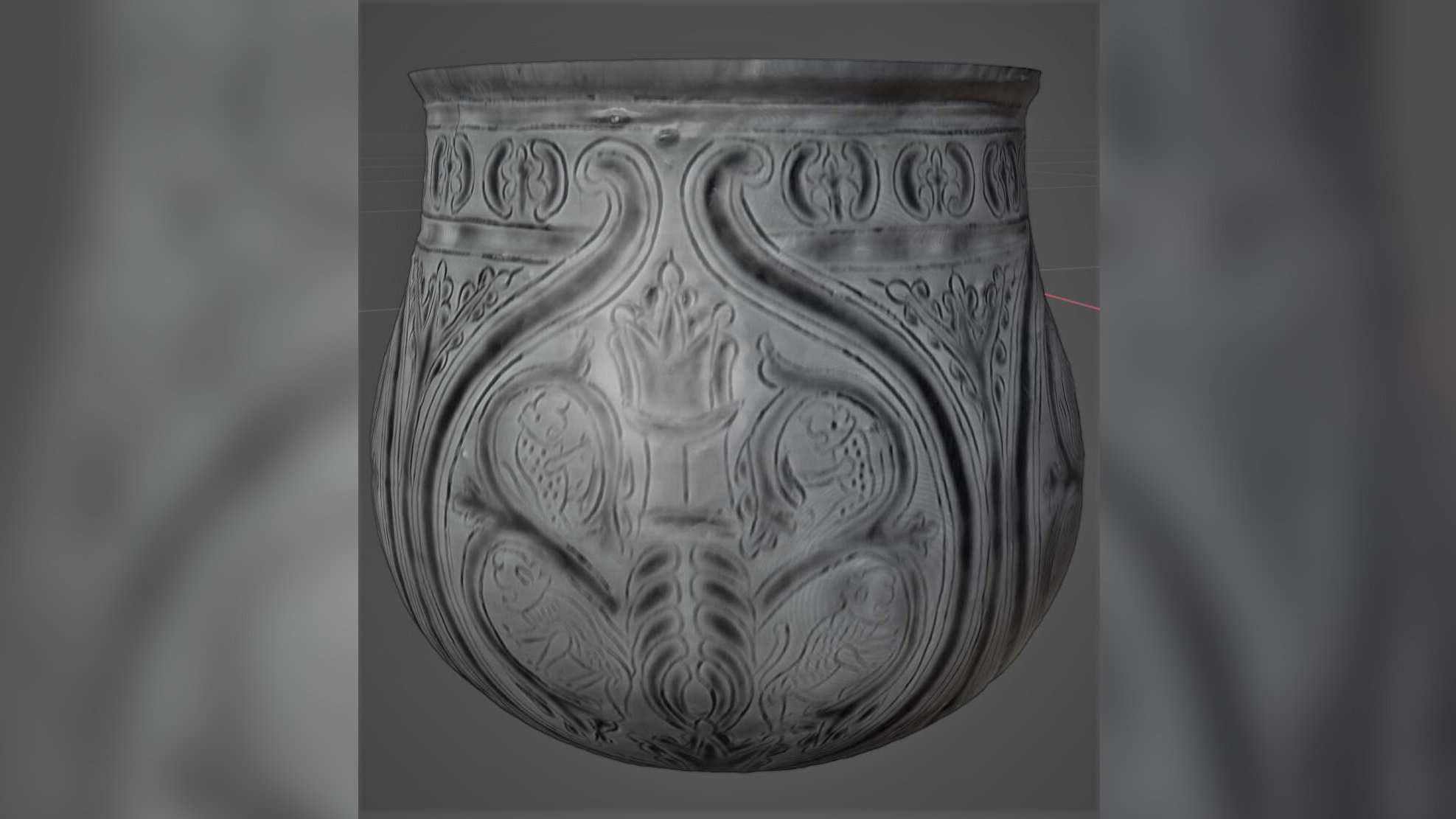
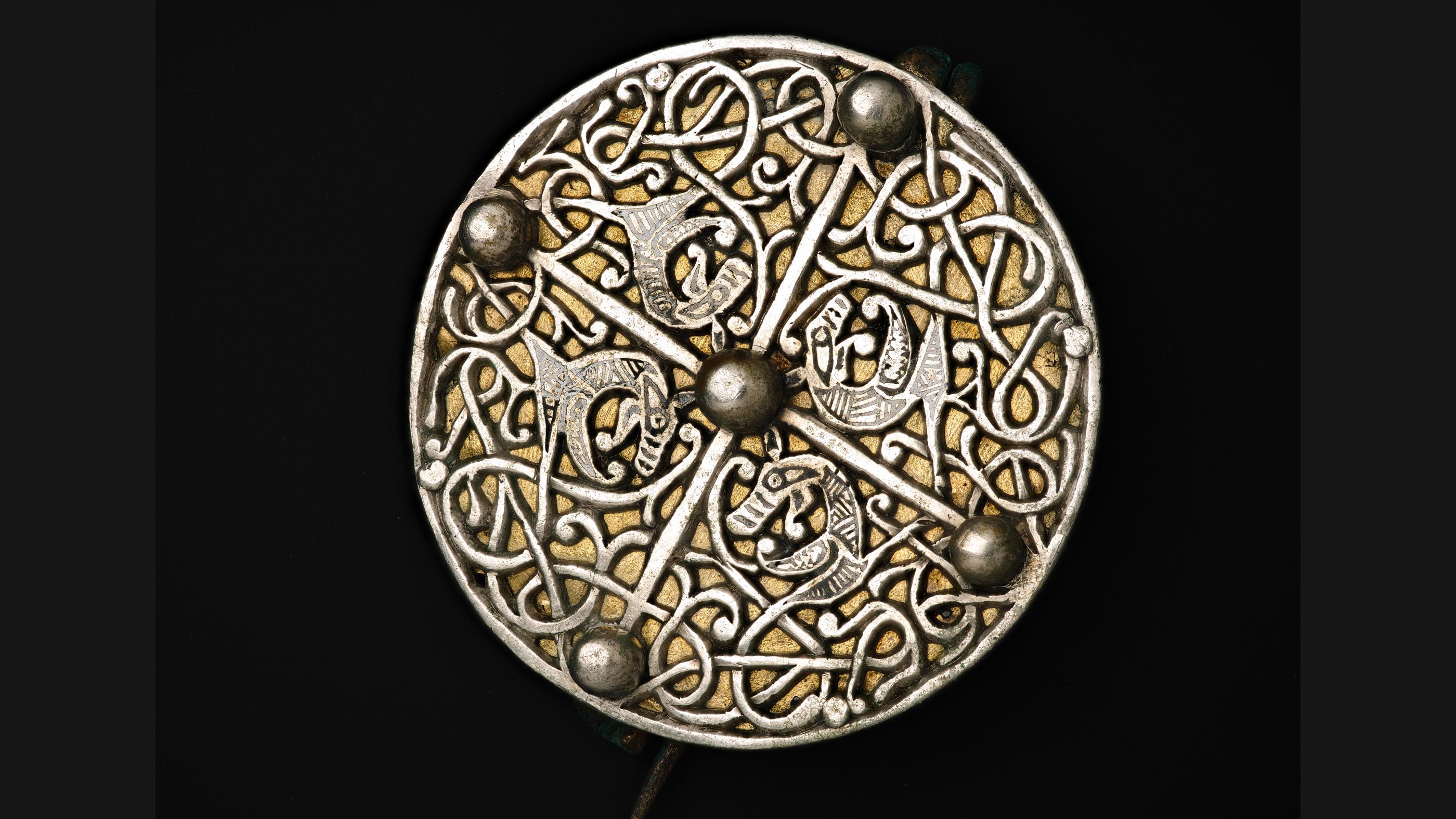
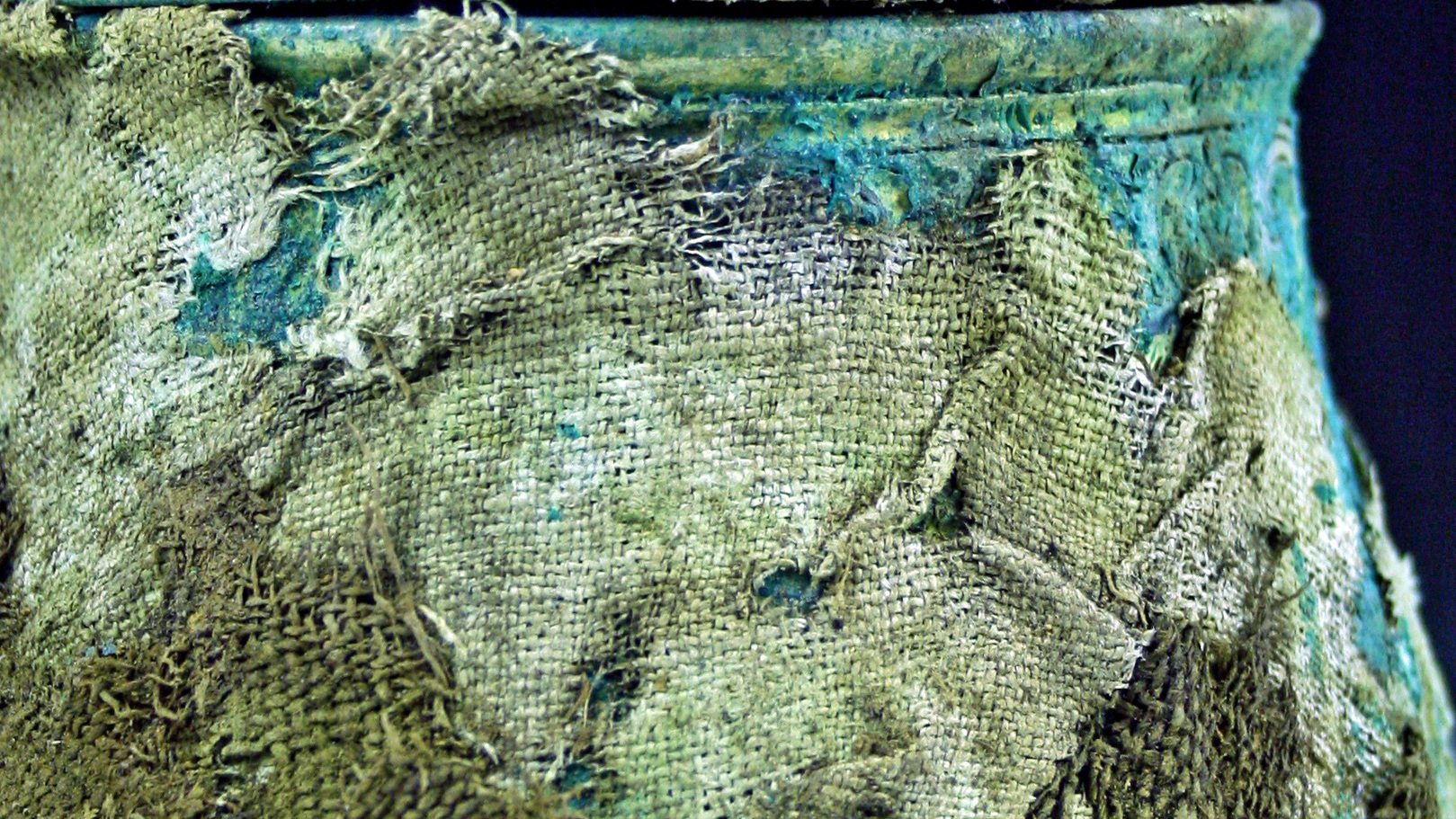
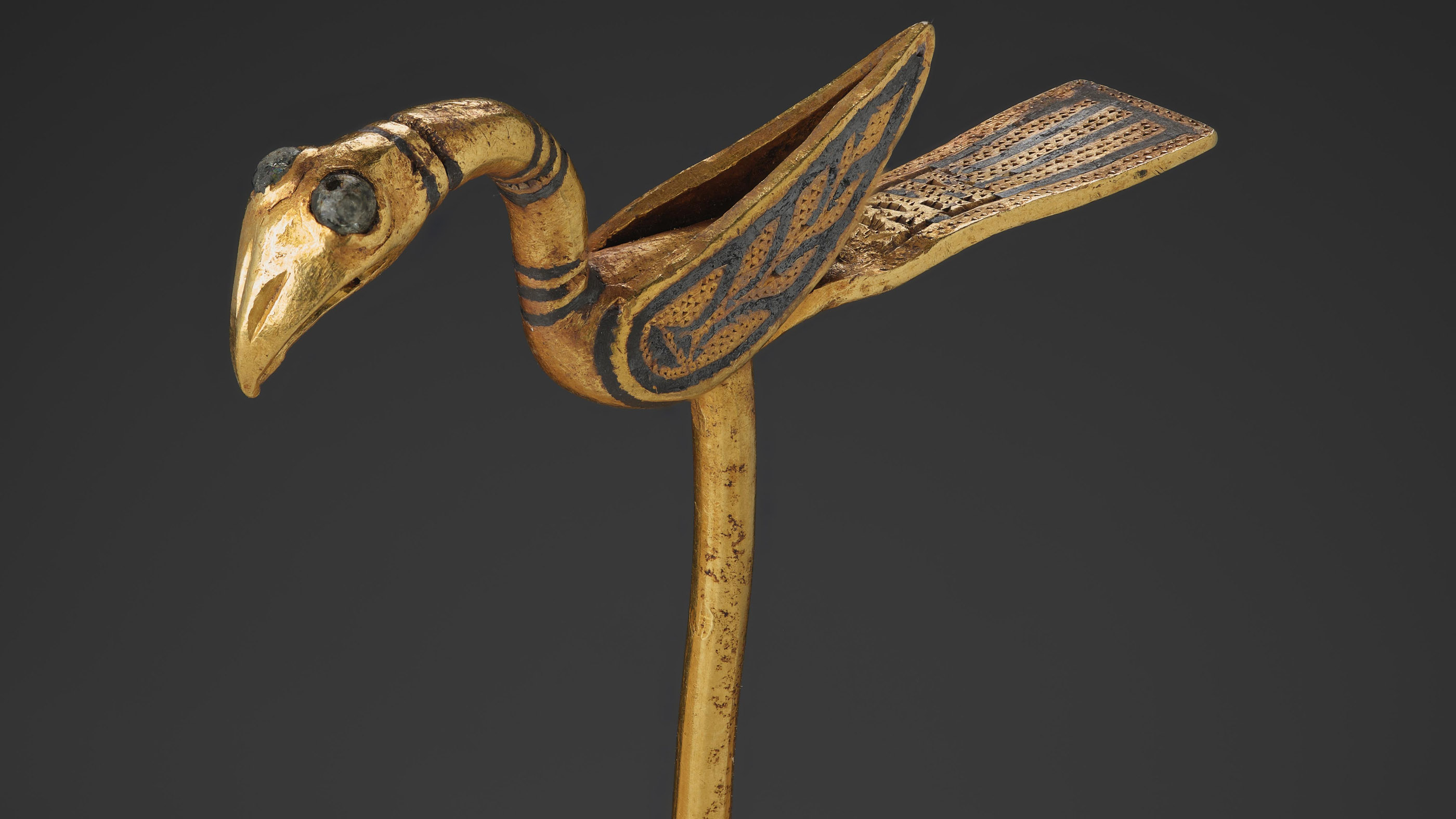
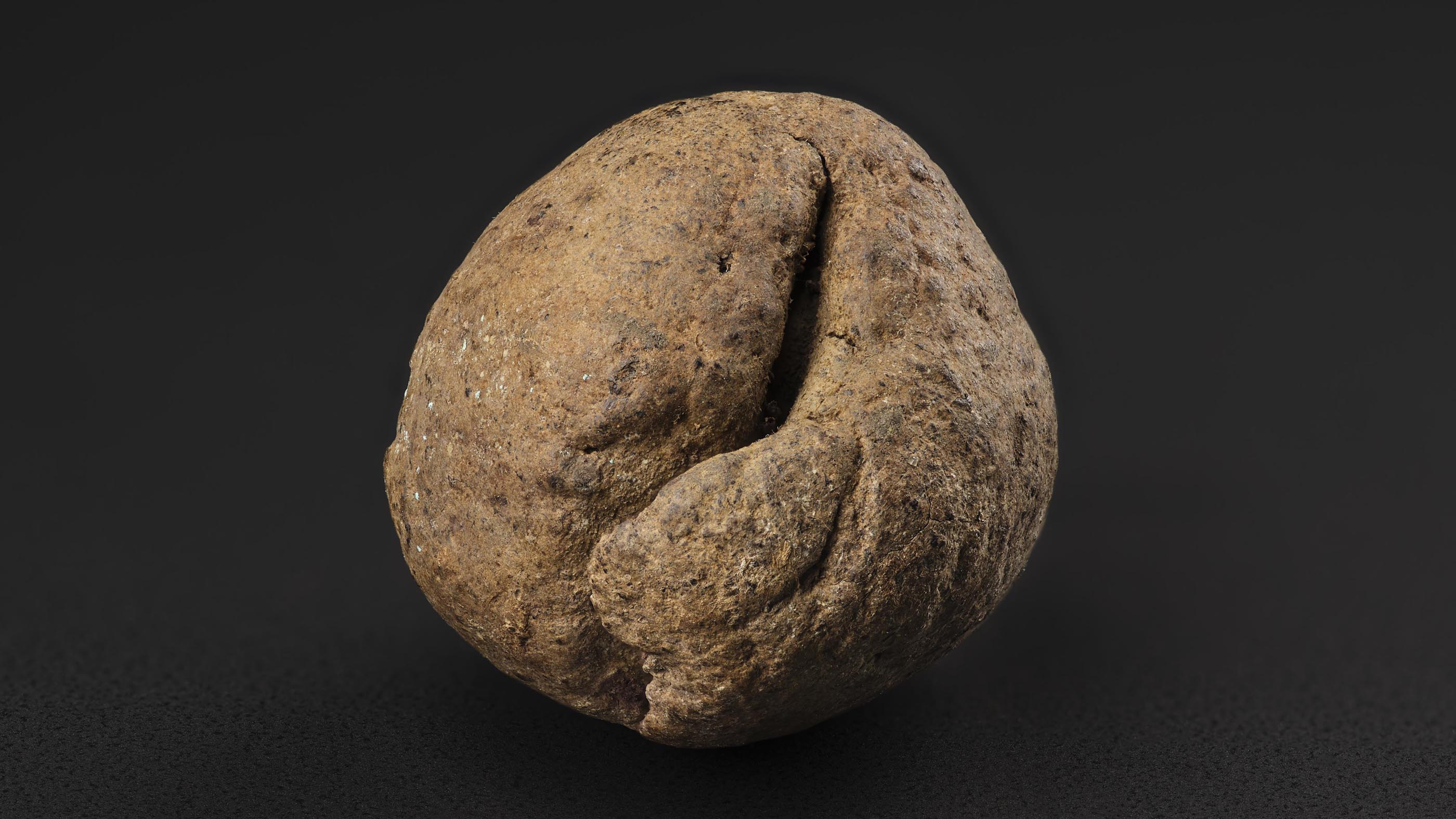
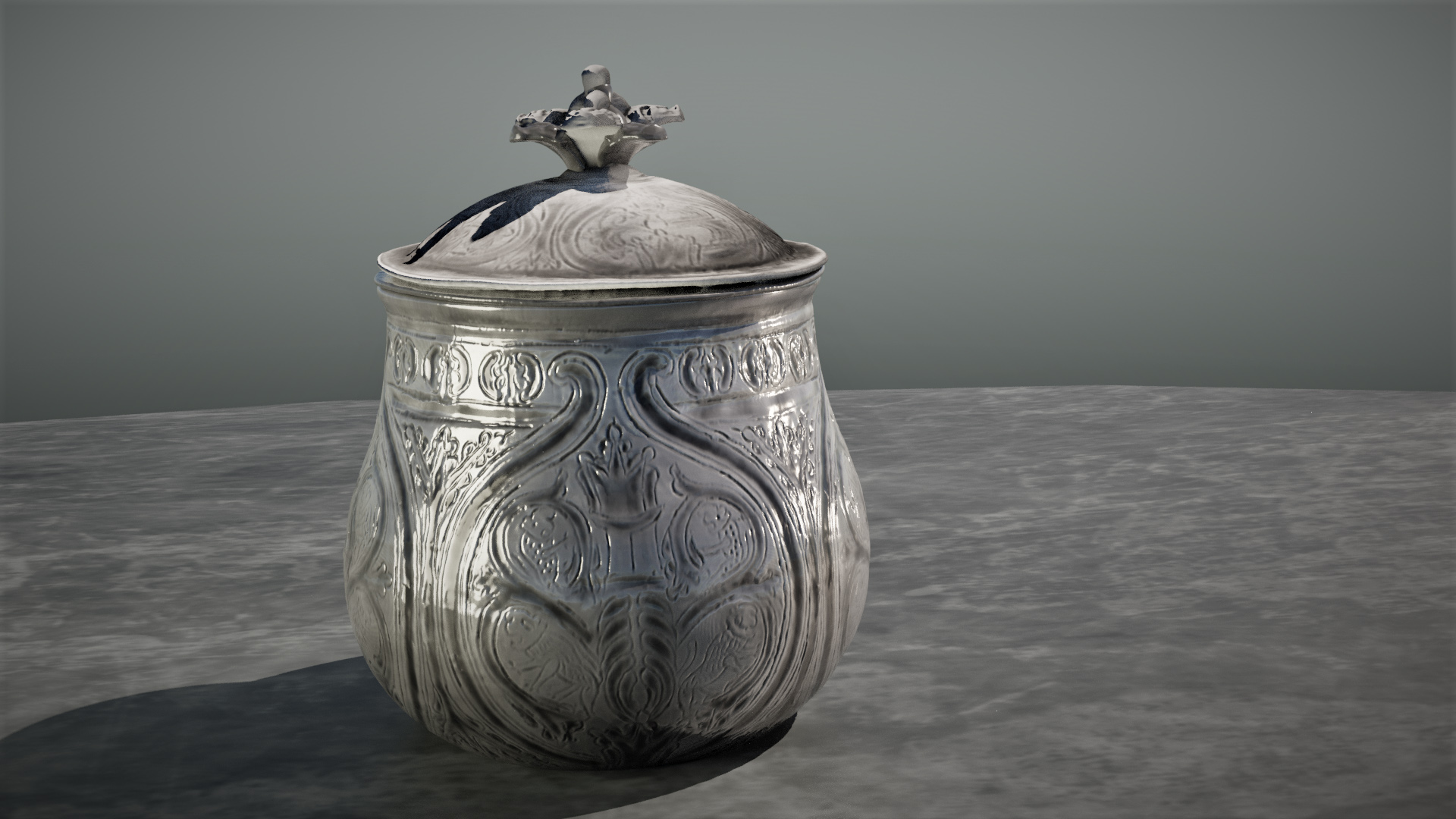
Hidden burial
Most of the artifacts (but not the vessel, which is too fragile) are now on display in the exhibit "Galloway Hoard: Viking-age Treasure" at the National Museum of Scotland in Edinburgh. The exhibit shows visitors how the hoard was buried in four distinct layers, according to National Museums Scotland.
The top layer contained a package of silver bullion, or bulk pieces of silver before they were minted into coins, as well as a rare Anglo-Saxon cross. It's possible that this top layer was a "sacrificial decoy" meant to distract from the layers beneath it, The Independent reported.
Beneath this first layer was a larger, lower section divided into three parts. The first part had another silver bullion parcel, twice the size of the first, wrapped in leather; the second held a cluster of silver "ribbon" arm rings that were bound together and concealed a small, wooden box holding three gold items; and the third held the lidded, silver-gilt vessel wrapped in a few textiles. The vessel was meticulously packed with silk-wrapped items, which may have been relics or heirlooms, the museum said in the statement. These items include beads, pendants, brooches, bracelets, an elaborate belt set and a rock-crystal jar.
Related: Photos: Vikings accessorized with tiny metal dragons
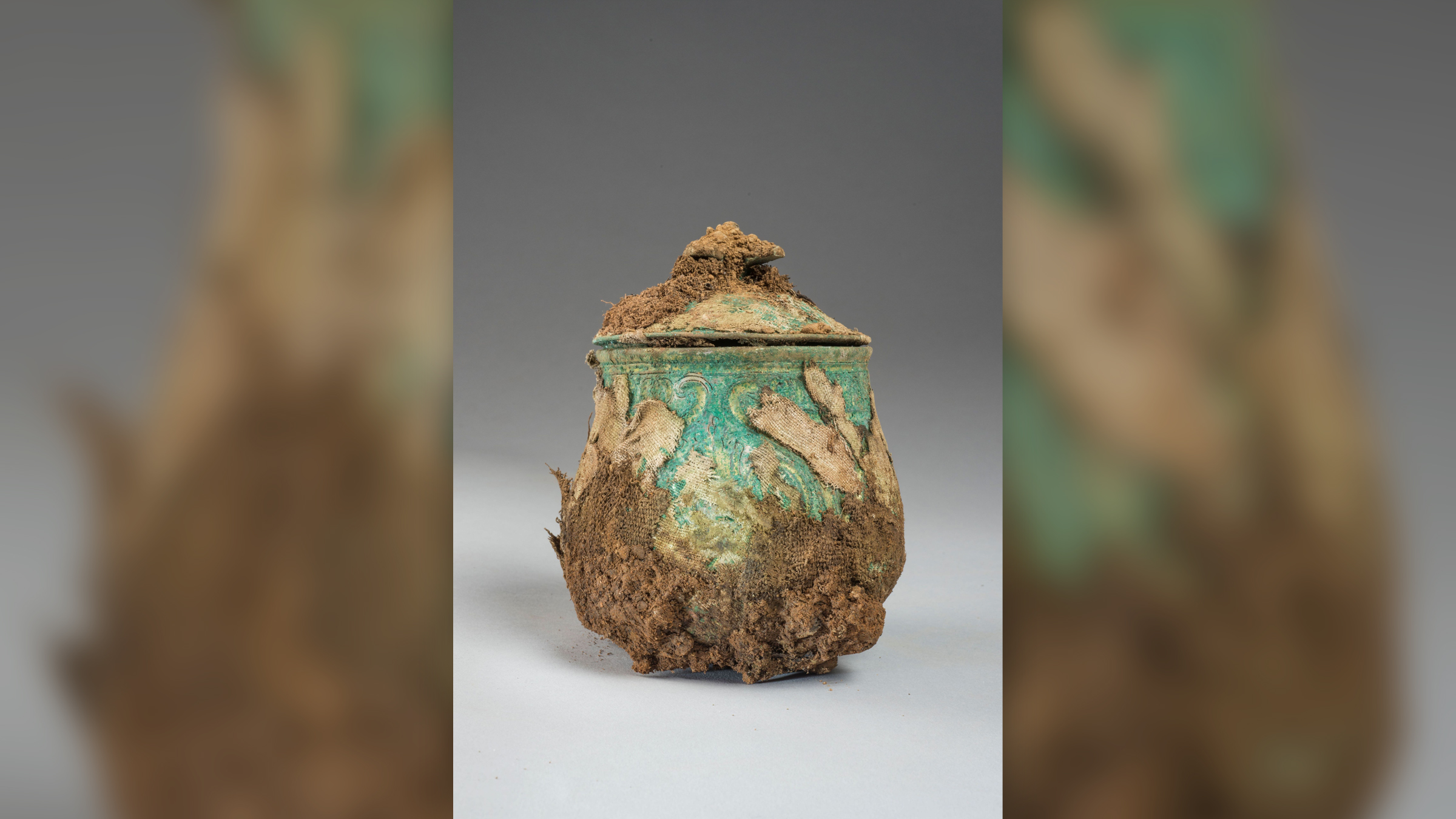
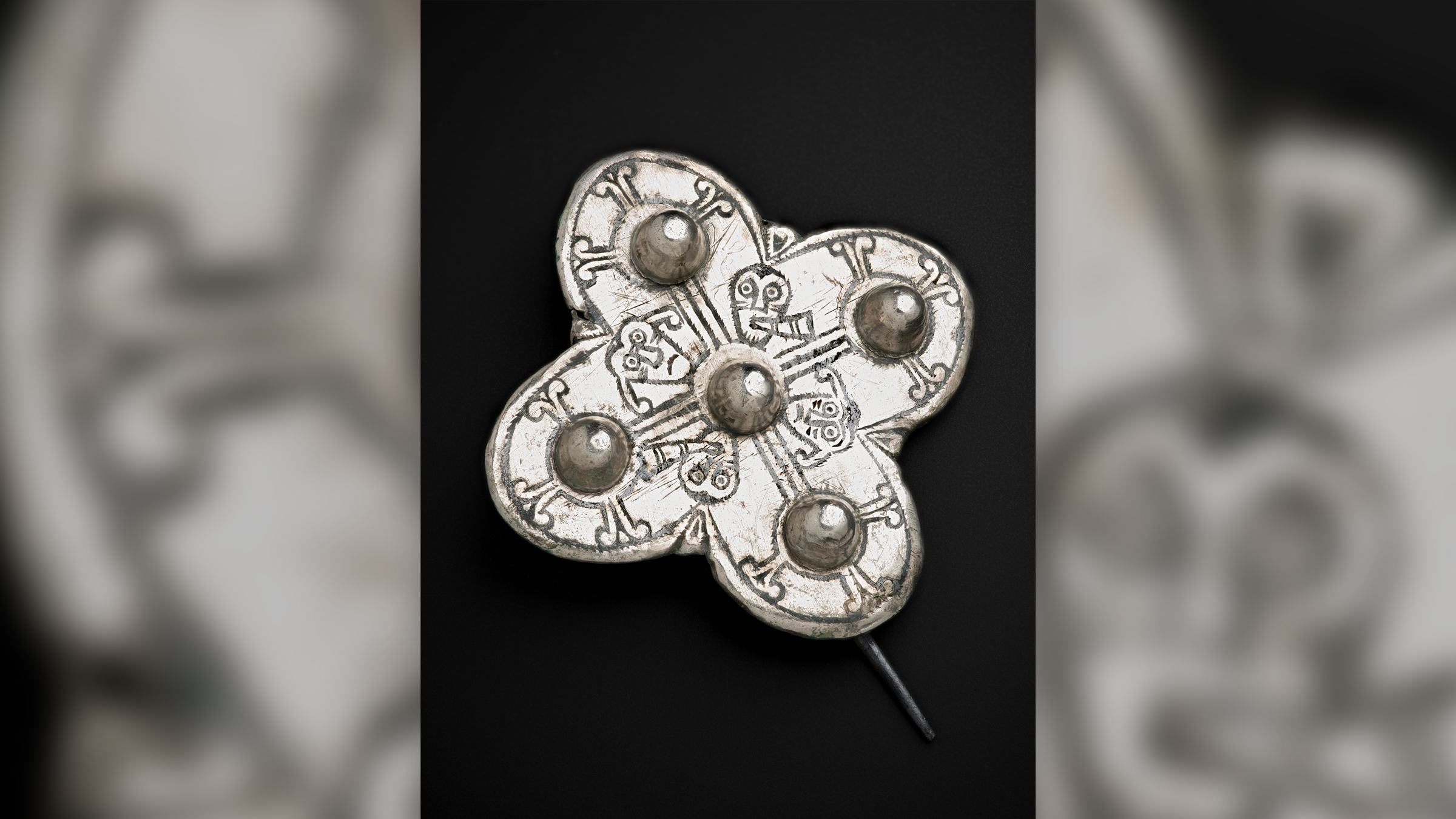
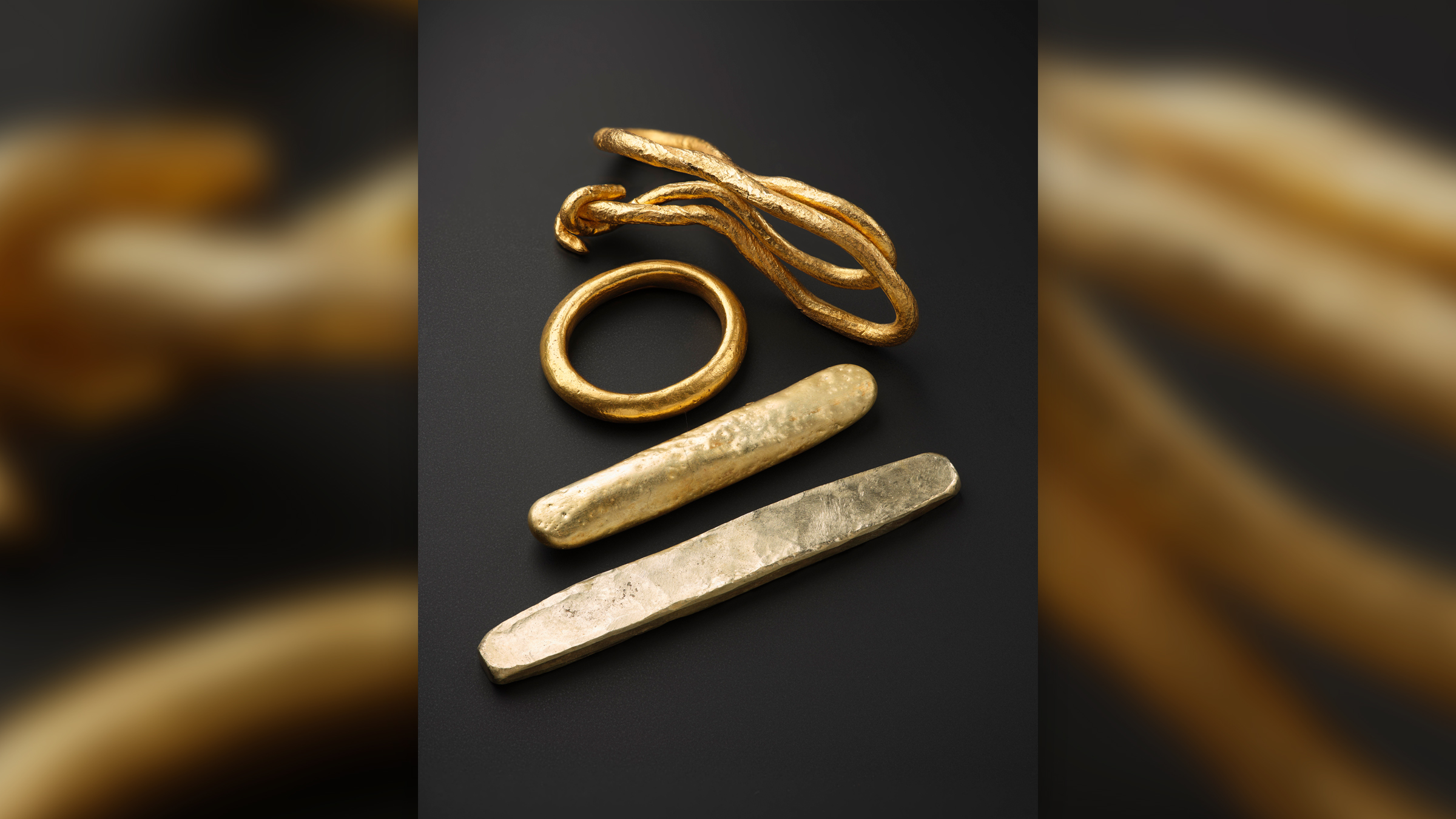
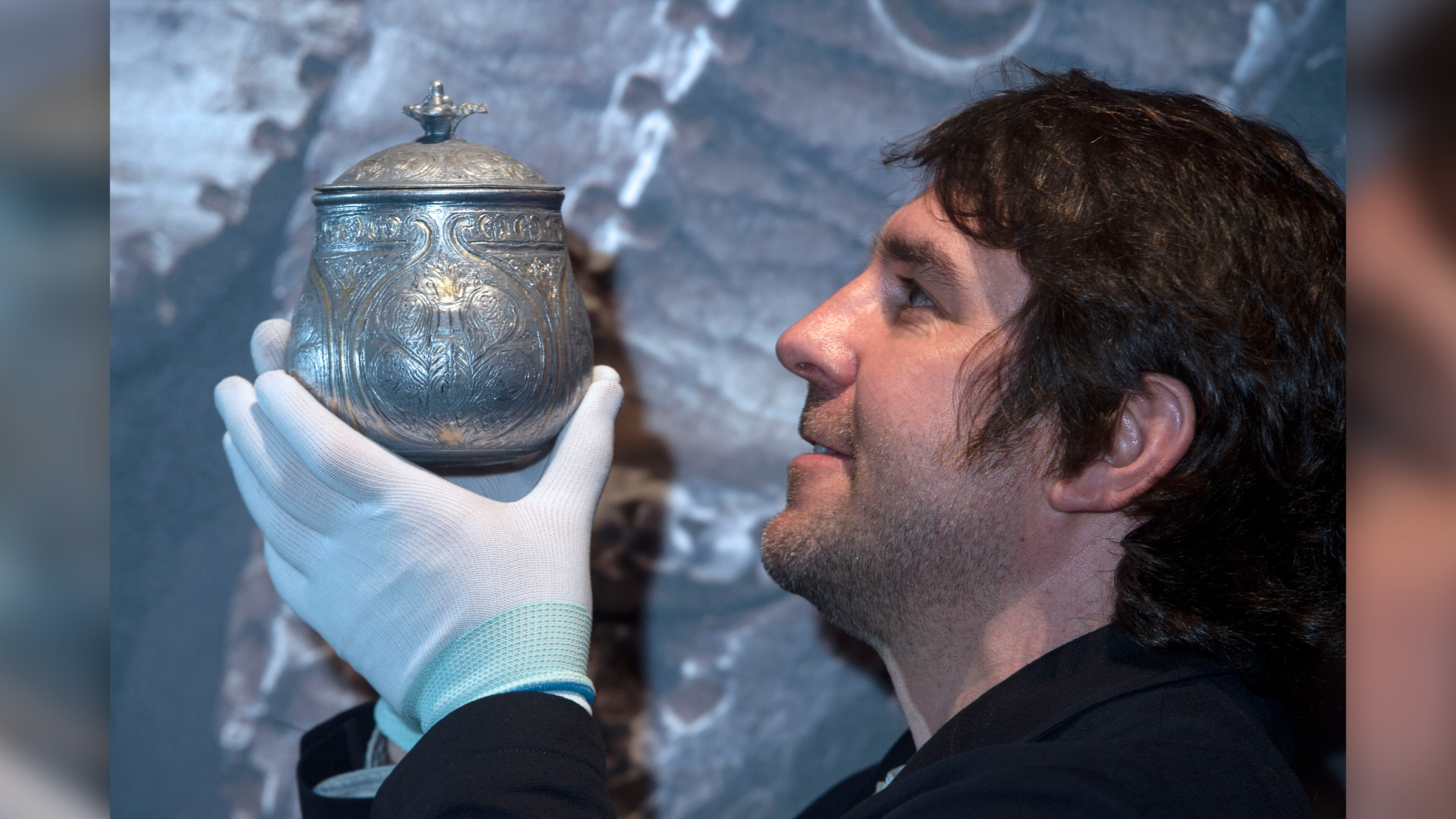
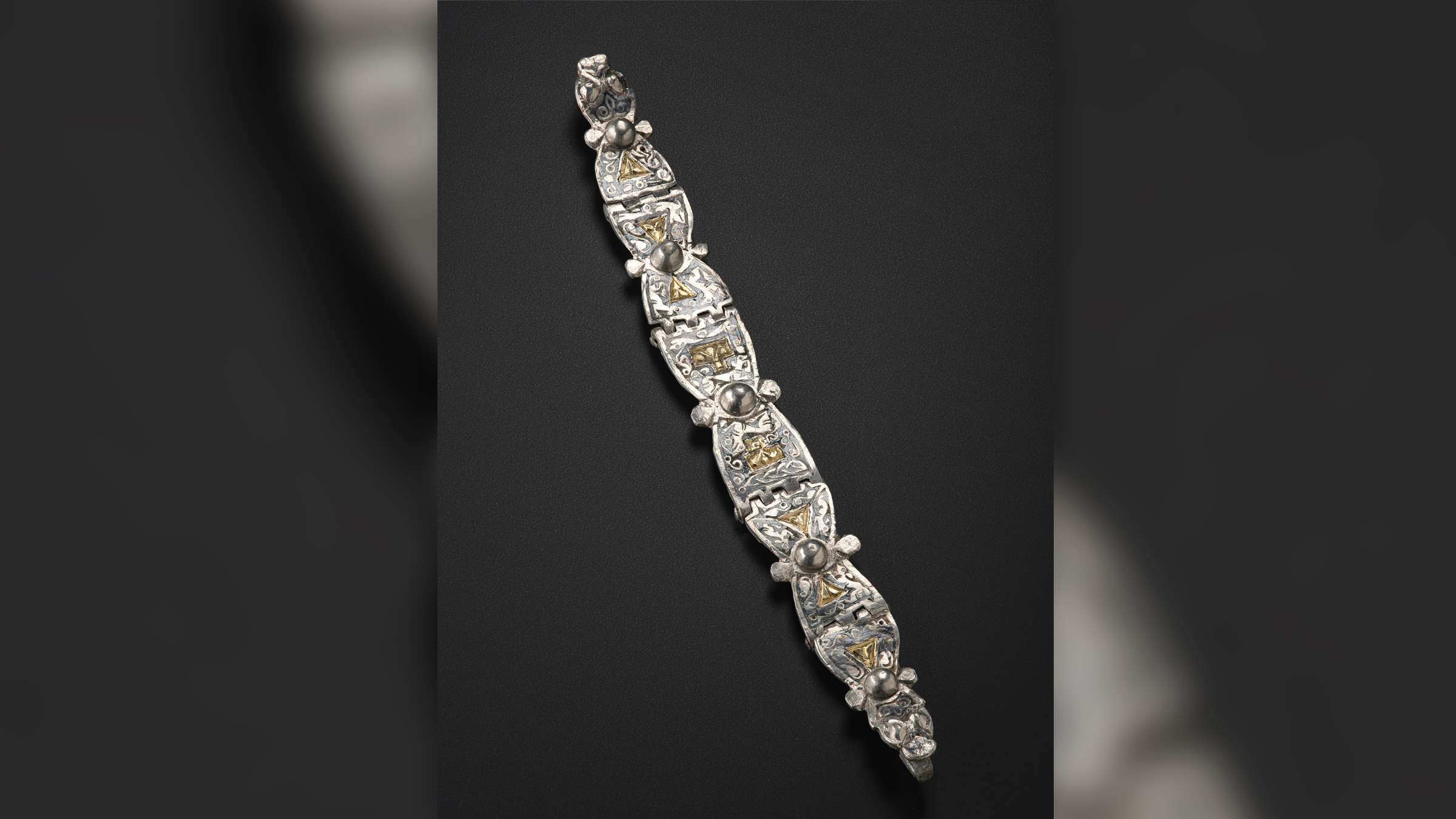
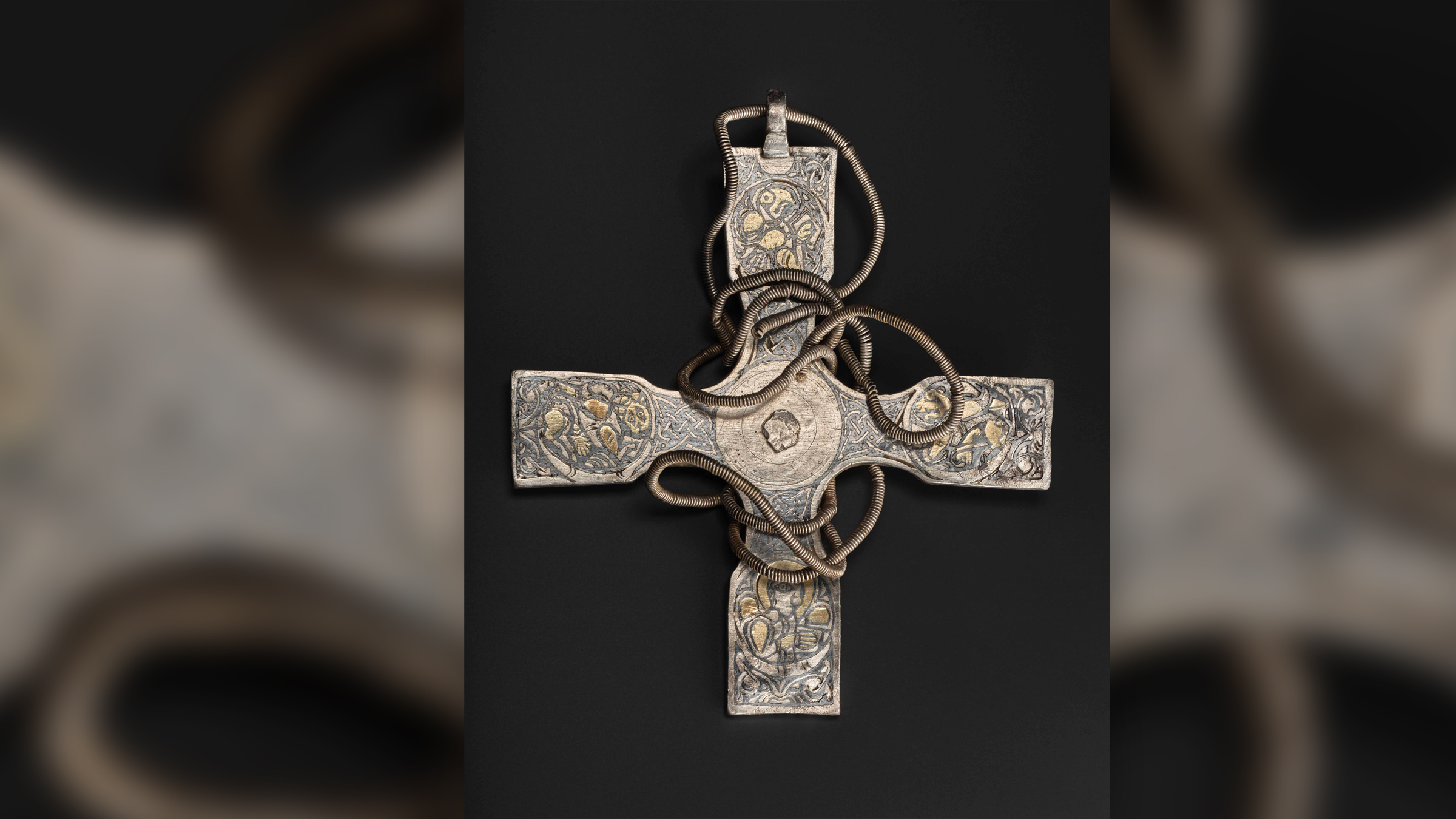
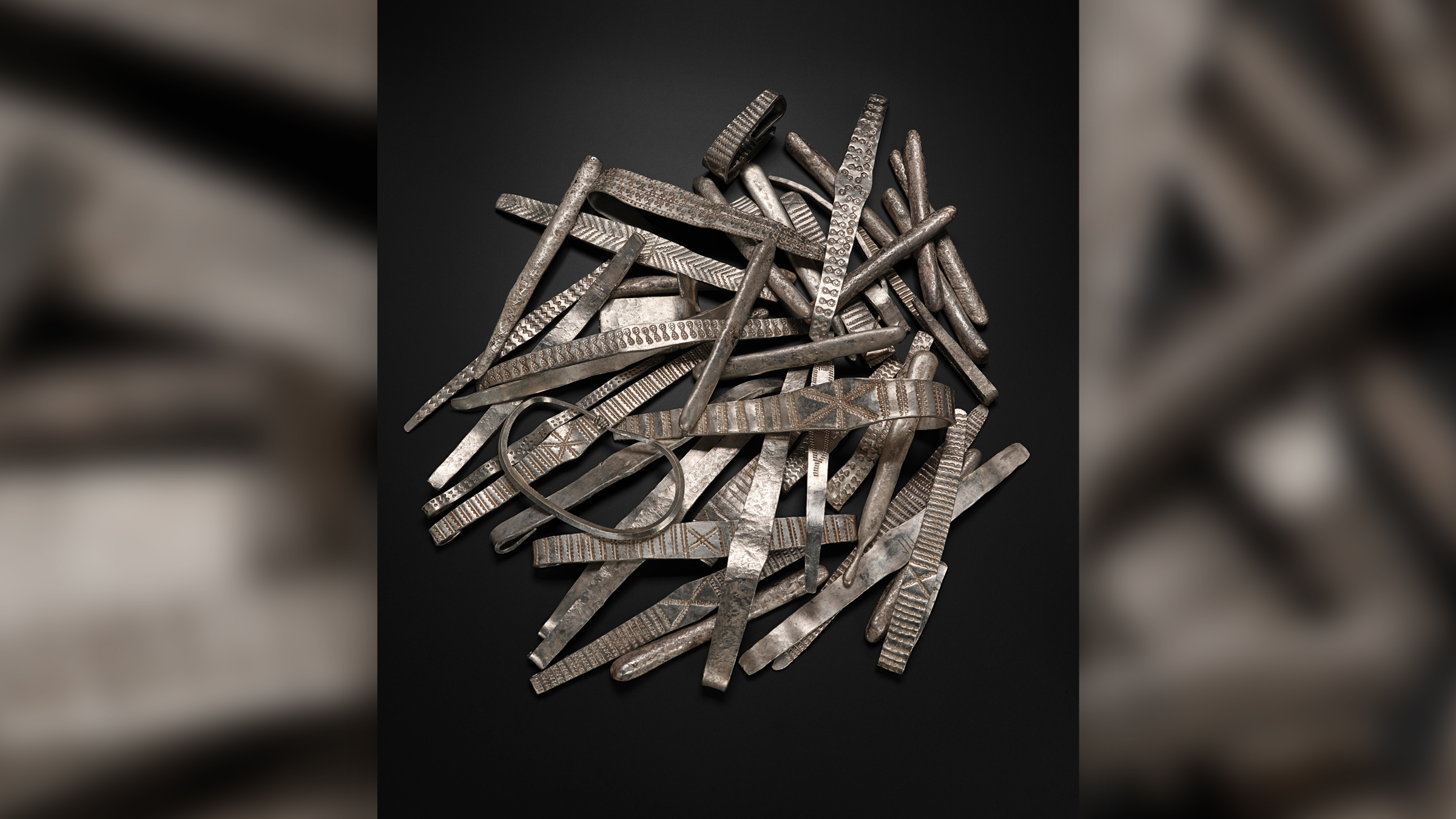
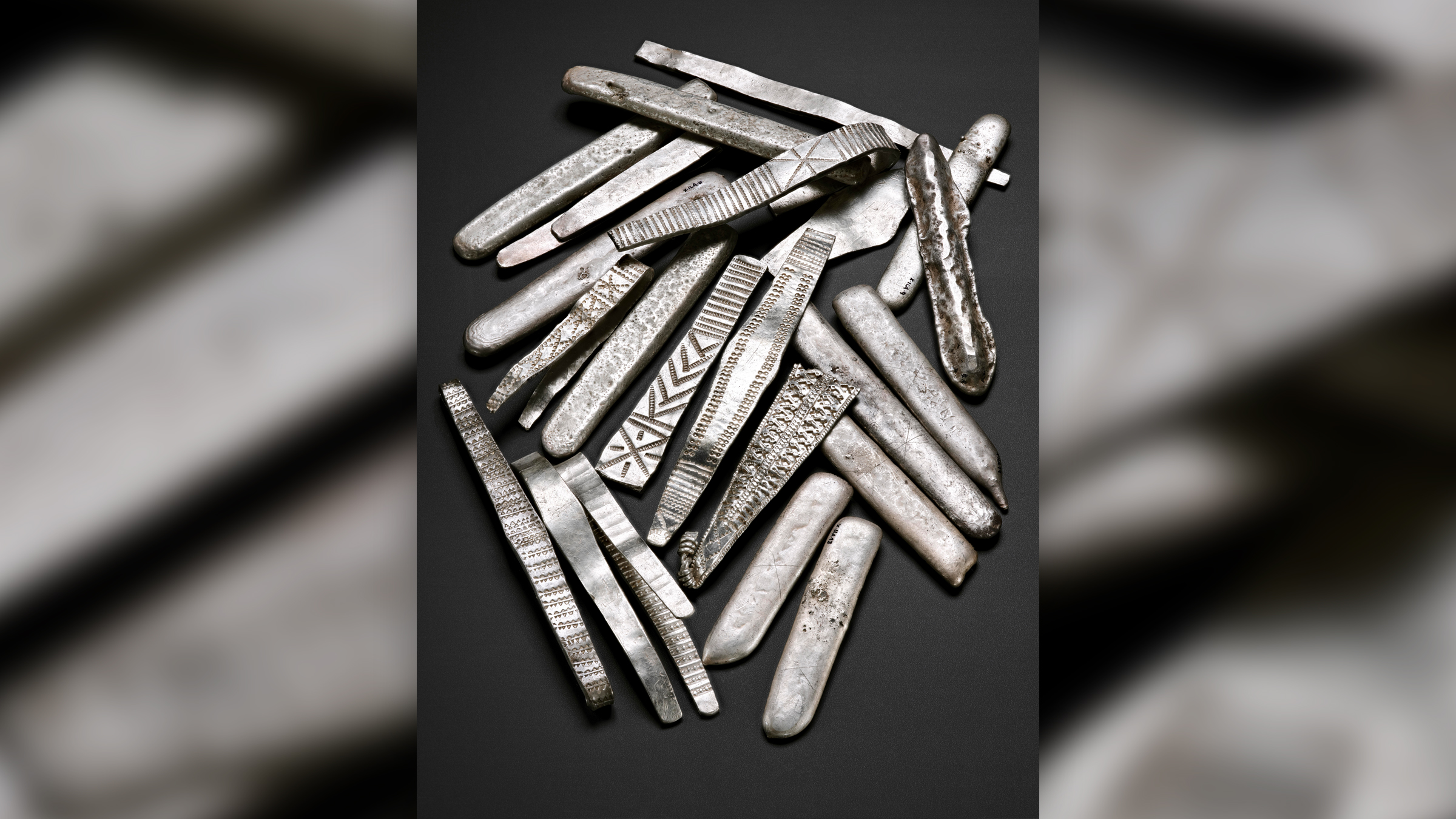
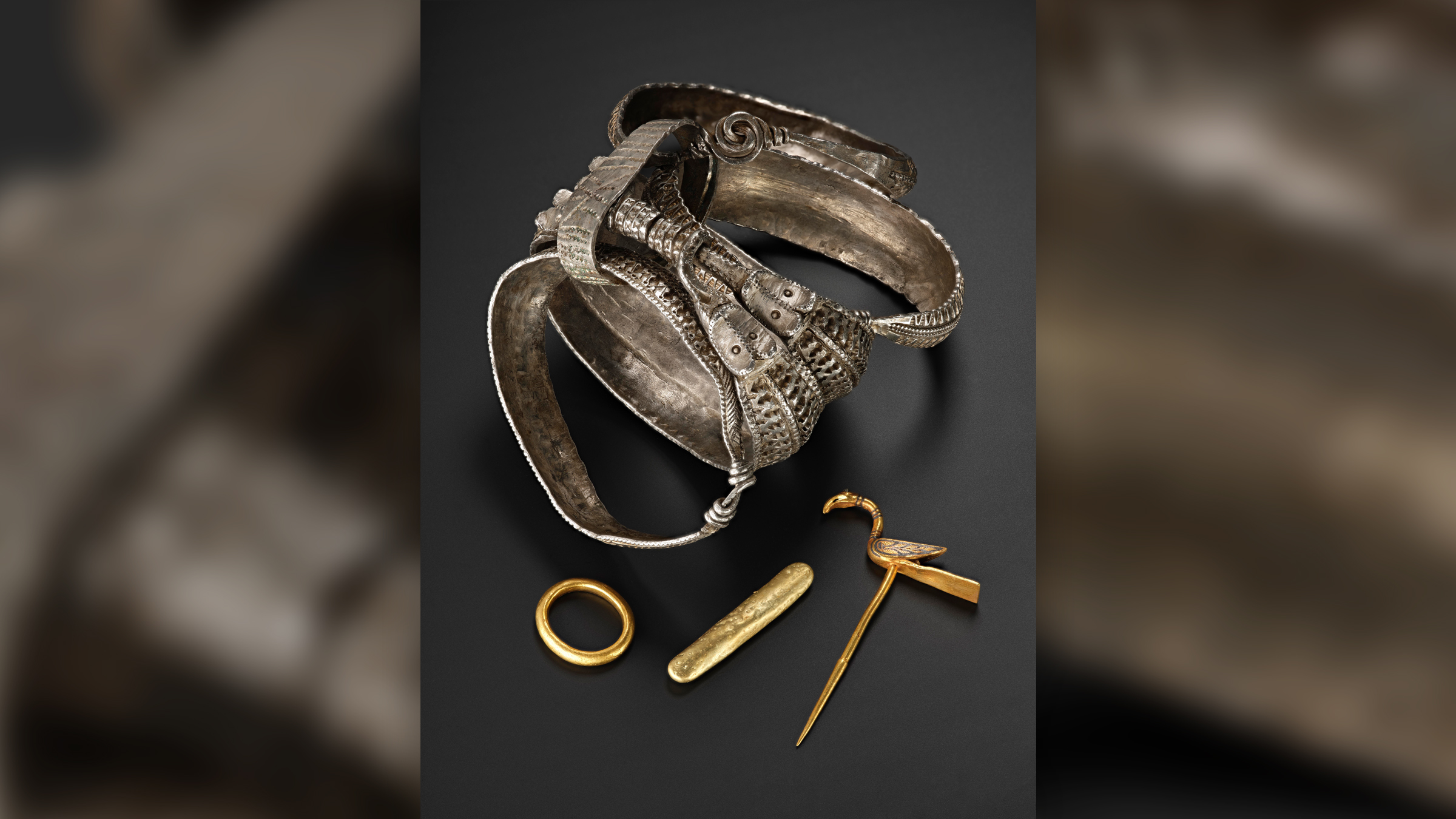
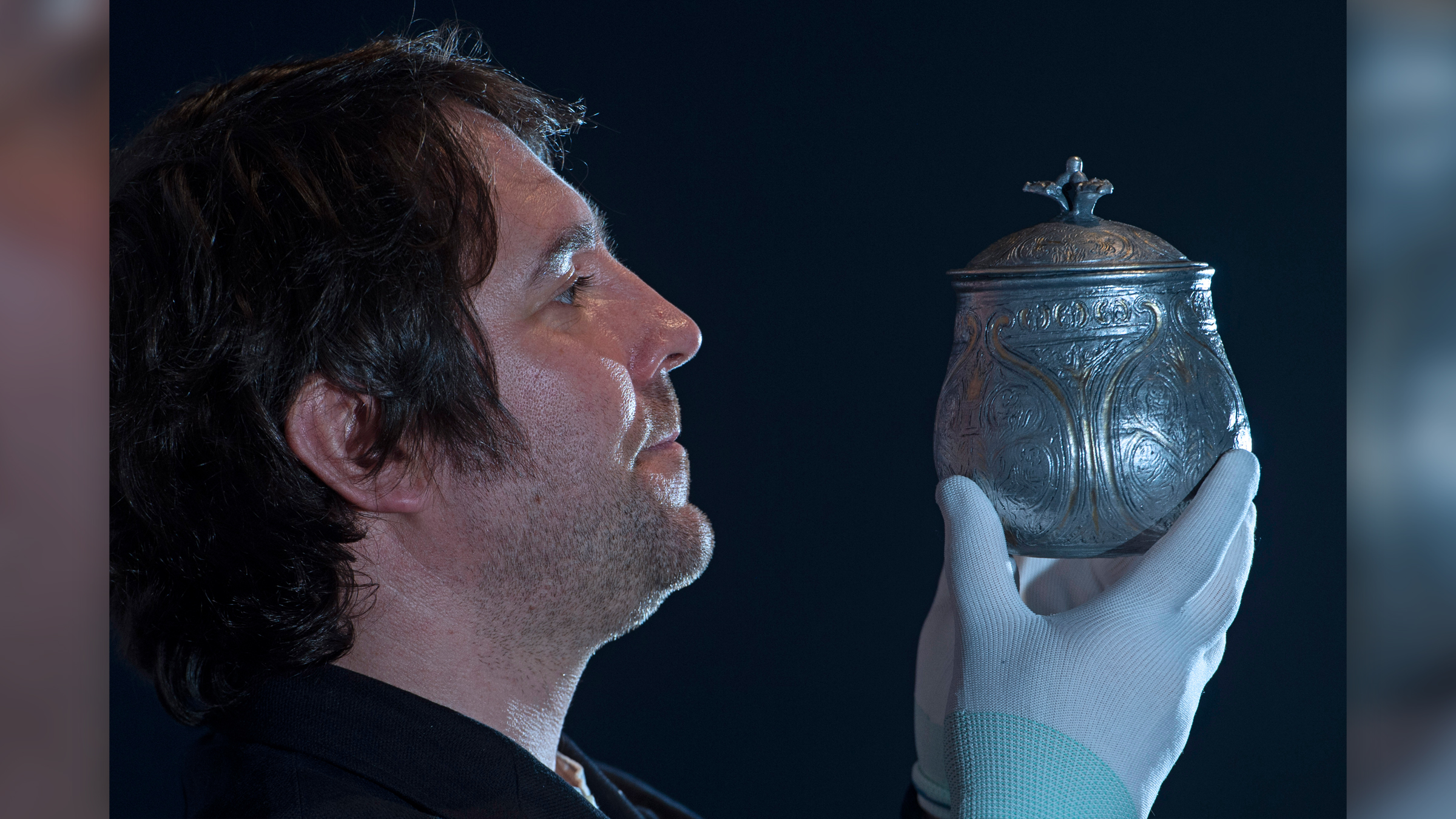
The hoard gives archaeologists a rare look at treasures that Anglo-Saxon churches and monasteries likely owned and then buried to hide from the Vikings, The Independent reported. And while it's a mystery who buried them, archaeologists have a few ideas.
In A.D. 902, the Irish drove the Vikings out of Dublin. As a result, the Vikings boated across the Irish Sea and invaded what is now southwest Scotland. Around this time, the Vikings seized control of Whithorn, an area with a church that isn't far from the Galloway Hoard, The Independent reported. Moreover, archaeological excavations suggest that there may be an unknown ecclesiastical site in the region.
Perhaps a medieval bishop, possibly one from Whithorn, was visiting local churches when he learned of the Viking raiders. Medieval bishops likely traveled with valuables and relics, as well as attendants, so maybe this troop buried the treasures for safekeeping, The Independent reported. Another possibility is that a bishop from Whithorn chose this specific spot, away from Whithorn, to outwit the Vikings. Whatever happened, the hoard was never retrieved by its original owners.
"The painstaking and methodical investigation of the Galloway Hoard is revealing more and more about its origins, and about the extraordinary far-flung connections enjoyed by the communities of Viking Age Britain," Gilbert Márkus, a historian in the Department of Celtic and Gaelic at the University of Glasgow, told The Independent. "The possibility that the hoard was buried by churchmen to keep it from falling into the hands of their enemies is even more tantalising, offering a real insight into the life of a community in a time of crisis."
Visitors can see the exhibit now at the National Museum of Scotland until Sept. 12, 2021, when it will go on tour to Kirkcudbright Galleries from Oct. 9, 2021 to July 10, 2022, and then to Aberdeen Art Gallery from July 30 to Oct. 23, 2022. Meanwhile, the U.K-based Arts and Humanities Research Council has awarded $1.4 million (1 million British pounds) to "Unwrapping the Galloway Hoard," a three-year project led by National Museums Scotland in partnership with the University of Glasgow, which will start in June. Researchers involved with the project will do precise dating and 3D modeling on more objects from the hoard and work to pinpoint each artifact's place of origin, according to a statement from the University of Glasgow.
Originally published on Live Science.

Laura is the archaeology and Life's Little Mysteries editor at Live Science. She also reports on general science, including paleontology. Her work has appeared in The New York Times, Scholastic, Popular Science and Spectrum, a site on autism research. She has won multiple awards from the Society of Professional Journalists and the Washington Newspaper Publishers Association for her reporting at a weekly newspaper near Seattle. Laura holds a bachelor's degree in English literature and psychology from Washington University in St. Louis and a master's degree in science writing from NYU.









